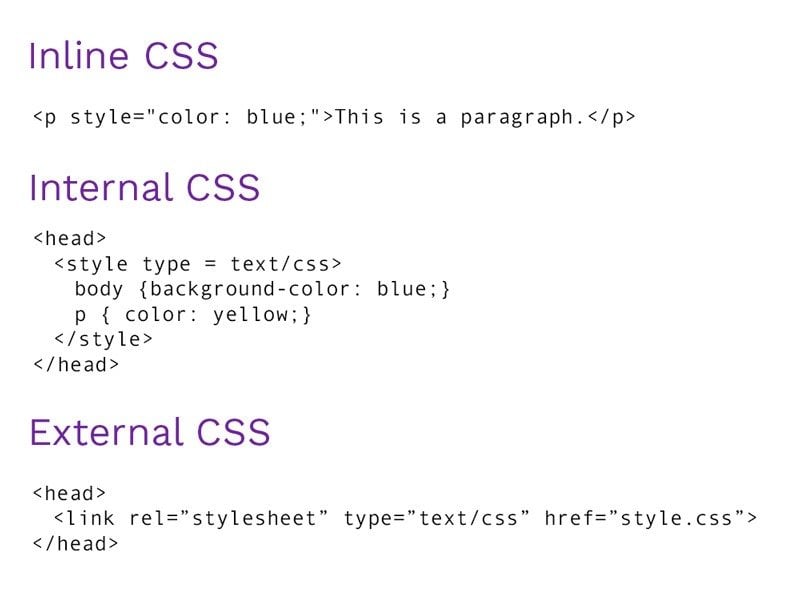TL;DR — The internal CSS styling option is popular for applying properties to individual pages by wrapping all styles in the <style> element. Then, you place it in the <head> section of HTML documents.

Internal CSS: Main Tips
- You can integrate internal CSS stylesheets by placing the
<style>element in the<head>section of a page. - Internal styles apply to whole pages but not to multiple HTML documents.
- Several pages can be styled by repeating the same block of internal styles in them.

- Easy to use with a learn-by-doing approach
- Offers quality content
- Gamified in-browser coding experience
- The price matches the quality
- Suitable for learners ranging from beginner to advanced
- Free certificates of completion
- Focused on data science skills
- Flexible learning timetable

- Simplistic design (no unnecessary information)
- High-quality courses (even the free ones)
- Variety of features
- Nanodegree programs
- Suitable for enterprises
- Paid Certificates of completion

- A wide range of learning programs
- University-level courses
- Easy to navigate
- Verified certificates
- Free learning track available
- University-level courses
- Suitable for enterprises
- Verified certificates of completion
How to Use Internal CSS
Internal CSS in HTML means adding CSS code in the <head> section of the document. Styling changes apply to every specific element found in the file.
Tip: this is a solid option for one-page websites or when you cannot create external stylesheets for your project.
Look at this example to see how to add the <style> element containing CSS rules for all the page:
<head>
<style>
h1 {
color: red;
margin-left: 20px;
}
p {
color: blue;
}
</style>
</head>Internal styles are relevant to one page only. However, transferring the same <style> element to other pages is not an efficient practice for adding CSS to HTML documents.
Note: developers add styles in HTML by using internal stylesheets when they are creating templates for their clients or colleagues.
Internal CSS: Summary
- By applying a style in HTML internally, you cannot reference this stylesheet with the <link> element.
- Include CSS in HTML so it would be convenient to change and update content. Internal stylesheets can make website maintenance more challenging.
- The best option is adding CSS to HTML externally. It means you create a .css file and link it to your website.
 HTML
HTML  CSS
CSS  PHP
PHP  JavaScript
JavaScript  SQL
SQL  Bootstrap
Bootstrap  Solidity
Solidity  jQuery
jQuery  Git
Git  Chrome DevTools
Chrome DevTools  C++
C++  Python
Python 



